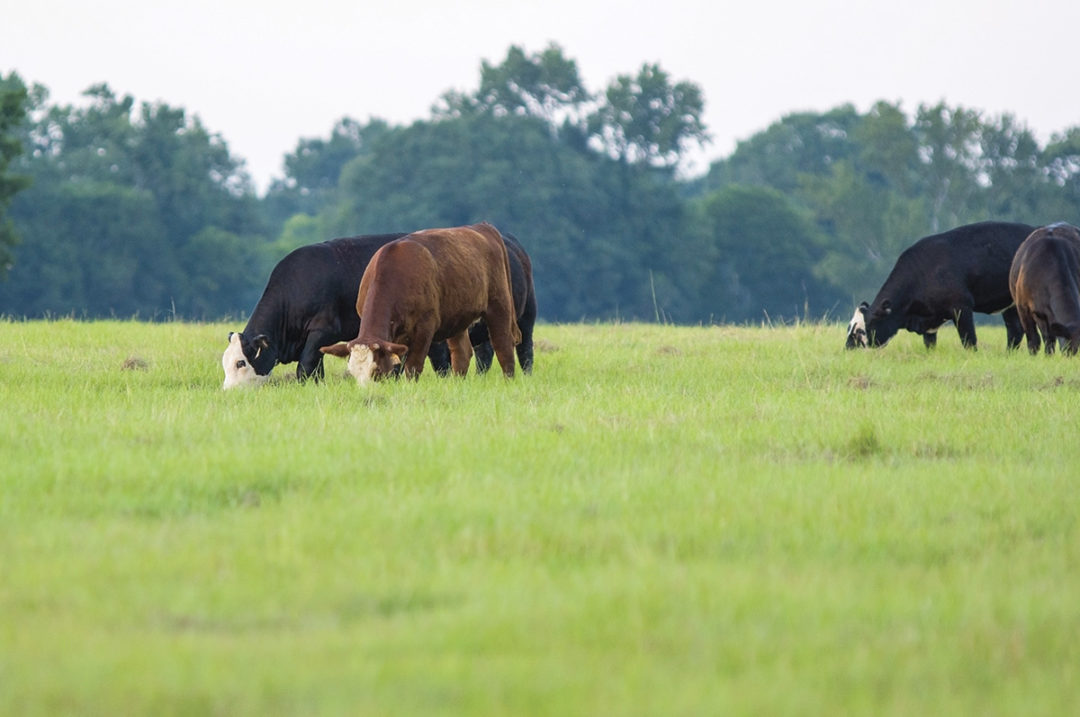Spring is my favorite time of the year. The strain of calving season is wrapping up, and the days are getting longer with warm weather setting in for good. Not only is it an exciting time to think about which bulls to use for next year’s calf crop, but the opportunity to cut back on the feed bill by turning cows out to pasture is a huge financial relief. Producers who’ve had adequate moisture have access to lush pastures at the height of herd nutritional demands of lactation, uterine repair and growth.
Keep in mind that the grass isn’t always greener on the other side of the fence, and considerations must be taken during spring turnout. Fortunately, tools and technologies are available to help maneuver these nutritional hurdles and ensure you meet the basic production goals of effective, easy breeding.
It is well established that reproductive success is predicated on adequate nutrition and health of the herd. In fact, reproduction is not essential for life and is the first biological system to fail if health challenges arise and energy, protein and micronutrient demands aren’t met. Truthfully, we need to look at our pastures no differently than we look at any other rations for the cow herd throughout the year. Our herds become well adapted to our winter feeding strategies, and it’s imperative to ensure we don’t expose the herd to nutritional challenges by turning out to pasture not knowing what is available. I recommend testing your forages, and you may be surprised at the results.
Immature forages are incredibly palatable, and you would think that a high-protein immature pasture would easily meet the nutritional needs of the herd. One of the problems of these “washy” grasses is dry matter (DM) content. In fact, some moisture levels in early spring forages can be as high as 80%. This means that every time a cow takes a bite of grass, she consumes only 20% DM. If a 1,300-pound lactating cow needs to consume 26 pounds of DM daily, then she must eat approximately 130 pounds of grass from sunup to sundown. The problem is: Her rumen will fill between 100 and 125 pounds. So she can’t meet her energy needs because she’s “full.” This creates compounding problems. She doesn’t feel satisfied and is in a negative energy balance, which doesn’t bode well for her attitude or nutrient needs.
The negative energy balance has consequences on her body condition as well as her ability to metabolize the high-protein grass she’s consuming. Crude protein levels may be elevated, but don’t use this value as the single benchmark for pasture quality. In fact, most of the protein in these lush pastures is in the rumen-degradable form. If energy needs aren’t met and protein is overconsumed, the rumen microbes will break down this protein, resulting in a carbon skeleton for energy and free ammonia. This ammonia is absorbed across the rumen wall and into the bloodstream, often referred to as blood urea nitrogen (BUN). Evidence exists that elevated BUN levels negatively impact embryonic survivability. Additionally, more energy is spent metabolically for the cow to get rid of the excess nitrogen in her system, compounding the energetic problem. Big picture: Make sure that daily energy intake is adequate before worrying about protein levels in the pasture.
An easy solution to all these problems is to increase the energy density of the diet by feeding grains or supplementing with hay or other stored forages. But doesn’t this defeat the purpose of slashing our feed bills? Opportunity exists in prebiotic technologies that can improve forage utilization and digestibility by directly feeding the good bacteria and fungi in the rumen. Stimulating the rumen fungi with prebiotic supplement products allows for greater degradation of forage and greater surface area for energy-harvesting bacteria to attach. Prebiotic-stimulated bacteria also generate more volatile fatty acids (VFA), which can bridge the gap of energy requirements. If a prebiotic can improve digestibility of forage by 17%, resulting in 16% more VFA production, the cow can meet her energetic needs to combat the concerns with current pasture DM and protein levels. Toss in the fact that 70% of the immune system resides in the gut, and you can imagine the positive health associations of feeding prebiotics. Healthier cattle partition more nutrients toward reproduction and have fewer vet bills, generating more profitability for you.
Finally, grass tetany and other mineral imbalances are of concern for most producers. These concerns are alleviated by mineral supplementation strategies, but keep in mind that not all minerals are created equal. Bioavailability differs between inorganic sources such as sulfates and oxides when compared to organic sources of trace minerals. Research has proven that zinc, copper and manganese are related to herd health and reproductive success in both females and bulls. Consequently, our goal is to ensure the entire herd is supplied with highly available sources of these trace minerals. Luckily, producers can kill two birds with one stone by providing powerful prebiotics in highly available vitamin/mineral supplements. The impact of delivering a prebiotic that can improve grass utilization and gut health on a premium vitamin and mineral program provides a convenient opportunity to maximize profitability.
We ask a lot of our herd to breed back in time when nutritional requirements are highest. You think you’re doing a service to your cows by turning them out on lush pastures, but never assume that the grass is always greener on the other side. In fact, I challenge producers to think outside the norm and consider prebiotic use in a vitamin and mineral supplementation program to maximize their reproductive success and remain profitable this upcoming production year.











